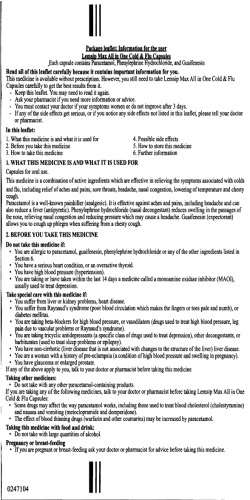
ABC of psychological medicine: Chronic multiple functional somatic symptoms
Downloaded from bmj.com on 27 December 2008 ABC of psychological medicine: Chronic multiple functional somatic symptoms Christopher Bass and Stephanie May BMJ 2002;325;323-326 doi:10.1136/bmj.325.7359.323 Updated information and services can be found at: http://bmj.com/cgi/content/full/325/7359/323 These include: References Rapid responses 5 online articles that cite this article can be accessed at: http://bmj.com/cgi/content/full/325/7359/323#otherarticles 11 rapid responses have been posted to this article, which you can access for free at: http://bmj.com/cgi/content/full/325/7359/323#responses You can respond to this article at: http://bmj.com/cgi/eletter-submit/325/7359/323 Email alerting service Topic collections Receive free email alerts when new articles cite this article - sign up in the box at the top left of the article Articles on similar topics can be found in the following collections General practice / family medicine (6963 articles) Child abuse (864 articles) Child and adolescent psychiatry (paedatrics) (1690 articles) Child health (5756 articles) Child and adolescent psychiatry (1705 articles) Mood disorders (including depression) (600 articles) Somatoform disorders (58 articles) Notes To order reprints follow the "Request Permissions" link in the navigation box To subscribe to BMJ go to: http://resources.bmj.com/bmj/subscribers Downloaded from bmj.com on 27 December 2008 Clinical review ABC of psychological medicine Chronic multiple functional somatic symptoms Christopher Bass, Stephanie May The previous article in this series described the assessment and management of patients with functional somatic symptoms. Most such patients make no more than normal demands on doctors and can be helped with the approach outlined. However, a minority have more complex needs and require additional management strategies. These patients typically have a longstanding pattern of presenting with various functional symptoms, have had multiple referrals for investigation of these, and are regarded by their doctors as difficult to help. Terminology Because such patients may evoke despair, anger, and frustration in doctors, they may be referred to as “heartsink patients,” “difficult patients,” “fat folder patients,” and “chronic complainers.” The use of these terms is inadvisable. If patients read such descriptions in their medical notes they are likely to be offended and lose faith in their doctor and may make a complaint. In psychiatric diagnostic classifications these patients are often referred to as having somatisation disorder. We prefer the term “chronic multiple functional symptoms” (CMFS). Epidemiology and detection Over 4% of the general population and 9% of patients admitted to tertiary care have CMFS. Each primary care doctor will have on average 10-15 such patients. Most patients with CMFS are women. They often have recurrent depressive disorder and a longstanding difficulty with personal relationships and may misuse substances. There is an association with an emotionally deprived childhood and childhood physical and sexual abuse. Some patients will clearly have general disturbances of personality. The risk of iatrogenic harm from over-investigation and over-prescribing for somatic complaints makes it important that patients with CMFS are positively identified and their management planned, usually in primary care. Potential CMFS patients may be identified simply by the thickness of their paper notes, from records of attendance and hospital referral, and by observation of medical, nursing, or clerical staff. Charles Darwin (1809-82) suffered from chronic anxiety and varied physical symptoms that began shortly after his voyage in the Beagle to South America (1831-6). Despite many suggested medical explanations, these symptoms, which disabled him for the rest of his life and largely confined him to his home, remain medically unexplained Management in primary care Assessment It is helpful if one doctor is identified as a patient’s principal carer. Once a patient is identified as possibly having CMFS a systematic assessment is desirable. The case notes should be reviewed and the patient seen for one or more extended consultations. Case notes—Patients with CMFS often have extensive case notes. Unless these are reviewed, much potentially useful information may remain hidden. It is also helpful to compile a summary of these records and to evaluate critically the accuracy of any previously listed complaints and diagnoses. The summary should include key investigations performed to date and any information about patients’ personal and family circumstances. BMJ VOLUME 325 10 AUGUST 2002 bmj.com “Fat files” are a simple indicator of a high level of contact with medical services, which may indicate multiple chronic functional somatic complaints 323 Clinical review Downloaded from bmj.com on 27 December 2008 Long appointment—During one or more long appointment a patient’s current problems and history should be fully explored. Patients should be encouraged to talk not only about their symptoms but also about their concerns, emotional state, and social situation and the association of these with their symptoms. At the end of the assessment, patient and doctor should agree a current problem list, which can then be recorded in the notes. Management The initial long interviews serve not only to derive a problem list but also to foster a positive relationship between doctor and patient. Thereafter, the doctor should arrange to see the patient at regular, though not necessarily frequent, fixed intervals. These consultations should not be contingent on the patient developing new symptoms. Consultation outside these times should be discouraged. Planned review All symptoms reported by patients during these consultations must be acknowledged as valid. A detailed review of symptoms enhances the doctor-patient relationship and minimises the likelihood of missing new disease. Reassurance that “nothing is wrong” may be unhelpful, possibly because a patient’s aim may be to develop an understanding relationship with the doctor rather than relief of symptoms. Focused physical examination can be helpful, but there is a risk of patients receiving multiple diagnostic tests and referrals to specialists, and these should be minimised. Patients also often accumulate unnecessary prescribed drugs, and if so these should be reduced gradually over time. If a satisfactory rapport can be established with a patient, new information about his or her emotional state, relationship difficulties, or childhood abuse may be revealed. In such cases the doctor may need to offer the patient a further long appointment to reassess the need for specialist psychological care. Support for doctors General practitioners managing patients with CMFS should arrange ongoing support for themselves, perhaps from a partner or another member of the primary care team with whom they can discuss their patients. A doctor and, for example, a practice nurse can jointly manage some of these patients if there is an agreed management plan and clear communication. Referral to psychiatric services Not all doctors will consider that they have the necessary skills or time to manage these patients effectively. Review by an appropriate specialist can then be helpful. Unfortunately, the decline in the number of “general physicians” and specialist mental health services’ increasing focus on psychotic illness mean there are few appropriate specialists to refer to. If referral is sought two questions must be considered: “Are there any local and appropriate psychiatric services?” and “How can I prepare the patient for this referral?” If available, liaison psychiatry services are often the most appropriate and experienced in this area of practice. To prepare the patient, a discussion emphasising the distressing nature of chronic illness and the expertise of the services in this area, together with a promise of continuing support from the primary care team, can help to make the referral seem less rejecting. If possible, the psychiatrist should visit the practice or medical department and conduct a joint consultation. 324 Assessment of chronic multiple functional somatic symptoms x Elicit a history of the current complaints, paying special attention to recent life events x Find out what the patient has been told by other doctors (as well as friends, relatives, and alternative practitioners). Does this accord with the medical findings? x Elicit an illness history that addresses previous experience of physical symptoms and contact with medical services (such as illness as a child, illness of parents and its impact on childhood development, operations, time off school and sickness absence) x Explore psychological and interpersonal factors in patient’s development (such as quality of parental care, early abusive experiences, psychiatric history) x Interview a partner or reliable informant (this may take place, consent permitting, in the patient’s presence) x After the interview attempt a provisional formulation Useful interviewing skills for doctors managing patients with multiple physical complaints x Adopt a flexible interviewing style—“I wonder if you’ve thought of it like this?” x Try to remind the patient that physical and emotional symptoms often coexist—“I’m struck by the fact that, in addition to the fatigue, you’ve also been feeling very low and cannot sleep” x Try “reframing” the physical complaints to indicate important temporal relationship between emergence of patient’s somatic and emotional symptoms and relevant life events x Respond appropriately to “emotional” cues such as anger x Explore patient’s illness beliefs and worst fears—“What is your worst fear about this pain?” Management strategy for patients with chronic multiple functional somatic symptoms x Try to be proactive rather than reactive—Arrange to see patients at regular, fixed intervals, rather than allowing them to dictate timing and frequency of visits x During appointments, aim to broaden the agenda with patients— This involves establishing a problem list and allowing patients to discuss relevant psychosocial problems x Stop or reduce unnecessary drugs x Try to minimise patients’ contacts with other specialists or practitioners—This will reduce iatrogenic harm and make containment easier if only one or two practitioners are involved x Try to co-opt a relative as a therapeutic ally to implement your management goals x Reduce your expectation of cure and instead aim for containment and damage limitation x Encourage patients (and yourself) to think in terms of coping and not curing Explanations to the patient Present patient’s problems as a summary with an invitation to comment: “So let me see if I’ve understood you properly: you have had a lot of pain in your abdomen, with bloating and distension for the past four years. You have been attending the (GP) surgery most weeks because you’ve been very worried about cancer (and about your husband leaving you). You also told me that these pains often occur when you are anxious and panicky, and at these times other physical complaints such as trembling and nausea occur. “I’m struck by the fact that all these complaints began soon after you had a very frightening experience in hospital, when your appendix was removed and you felt that ‘No one was listening to my complaints or pain.’ “Have I got that right, or is there anything I’ve left out?” BMJ VOLUME 325 10 AUGUST 2002 bmj.com Clinical review Downloaded from bmj.com on 27 December 2008 Summary of a 15 year “segment” of the life of a patient with chronic multiple functional somatic symptoms Date (age) Symptoms (life events) 1970 (18) Abdominal pain 1973 (21) Pregnant (boyfriend in prison) Referral GP to surgical outpatients GP to obstetrics and gynaecology outpatients GP to gastroenterology and neurology outpatients Investigations Appendicectomy Termination of pregnancy Outcome Normal — All tests normal 1979 (27) Pelvic pain (wants to be sterilised) 1981 (29) Fatigue (problems at work) GP to obstetrics and gynaecology outpatients GP to infectious disease clinic Sterilised, ovaries preserved 1983 (31) Aching, painful muscles GP to rheumatology clinic 1985 (34) Chest pain and breathlessness (son truanting from school) Accident and emergency to chest clinic Mild cervical spondylosis. No treatment Nothing abnormal detected, probable hyperventilation Diagnosis of irritable bowel syndrome and unexplained syncope. Treated with Fybogel Pelvic pain persists for 2 years after surgery Diagnosis of myalgic encephalomyelitis made by patient. Joins self help group Treated with Tryptizol 50 mg on referral to pain clinic. Improves Refer to psychiatric services 1975-7 (23-25) Bloating, abdominal pain, blackouts (stressful divorce) Specialist assessment Before interviewing a patient, it is useful to request both the general practice and hospital notes and summarise the medical history. A typed summary of the “illness history” can be kept as a permanent record in the notes. This summary can guide future management and is especially useful when a patient is admitted subsequently as an emergency or when the receiving doctor has no prior knowledge of the patient. Several important interviewing skills should be used during the assessment. These skills can be learnt using structured role playing and video feedback. They form the basis of a technique called reattribution, which has been developed to help the management of patients with functional somatic symptoms. Specialist management If a patient can understand and agree an initial shared formulation of the problems, an important first stage is reached. From this a plan of management can be negotiated. It is best to adopt a collaborative approach rather than a didactic or paternalistic manner. If it is difficult to arrive at an understanding of why the patient developed these symptoms at this particular time, then an alternative approach may have to be adopted. In essence this involves the doctor attempting to address those factors that are maintaining the symptoms. Assessment and management go hand in hand. One of the main aims of management is to modify patients’ often unrealistic expectations of the medical profession and to remind them of the limits to medicine. In many cases hopes may have been falsely raised, and patients expect either a cure or at least a considerable improvement in symptoms. Although this is desirable, it may not be attainable. Instead, the doctor should attempt to broaden the agenda, with an emphasis on helping patients to address personal concerns and life problems as well as somatic complaints. It is also necessary to encourage them to concentrate on coping rather than seeking a cure. This process requires patience, and a capacity to tolerate frustration and setbacks. It may require several discussions in which the same issues are reviewed. In the long term, however, it can be rewarding for both patient and doctor. Common problems in management Management may be complicated by various factors. Firstly, preoccupation and anxious concern about symptoms may lead patients to make unhelpful demands of their doctor, which prove difficult to resist. BMJ VOLUME 325 10 AUGUST 2002 bmj.com Nothing abnormal detected What is the cause of functional somatic symptoms? x A variety of biological, psychological, and social factors have been shown to be associated with functional symptoms; the contribution of these factors will vary between patients Recent developments in neuroscience show altered functioning of the nervous system associated with functional symptoms, making the labelling of these as “entirely psychological” increasing inappropriate x With our current knowledge, it is best to maintain “aetiological neutrality” about the cause of functional symptoms x The main task of treatment is to identify those factors that may be maintaining a patient’s symptoms and disability Maintaining factors that should be focus of treatment in patients with multiple somatic symptoms x x x x x x x Depression, anxiety, or panic disorder Chronic marital or family discord Dependent or avoidant personality traits Occupational stress Abnormal illness beliefs Iatrogenic factors Pending medicolegal claim Biomedical approach Biopsychosocial approach Symptoms Engaging with distress Investigations Broaden agenda Drugs Problem solving Operations Involve relatives Disability Rehabilitation Curing Coping The aim of treatment for patients with chronic multiple functional symptoms is to add a biopsychosocial perspective to the existing biomedical approach 325 Clinical review Downloaded from bmj.com on 27 December 2008 Secondly, there may be evidence of longstanding interpersonal difficulties, as indicated by remarks such as “Nobody cares” or “It’s disgusting what doctors can do to you.” Such comments may suggest that the patient’s relationship with the doctor may reflect poor quality parental care or emotional deprivation in childhood. They are important for two reasons: firstly, the doctor may take these remarks personally, become demoralised or angry, and retaliate, which will destroy the doctor-patient relationship; and, secondly, the attitudes revealed may require more detailed psychological exploration. Finally, iatrogenic factors may intervene that are beyond the treating doctor’s control. Because these patients have often visited several specialists, conventional and alternative, they may have been given inappropriate information and advice, inappropriate treatment, or, in some cases, frank misdiagnosis. Factitious disorders and malingering Factitious disorders Factitious disorders are characterised by feigned physical or psychological symptoms and signs presented with the aim of receiving medical care. They are therefore different from functional symptoms. The judgment that a symptom is produced intentionally requires direct evidence and exclusion of other causes. Most patients with factitious disorders are women with stable social networks, and more than half of these work in medically related occupations. Once factitious disorder is diagnosed, it is important to confront the patient but remain supportive. When factitious disorder is established in a person working in health care it is advisable to organise a multidisciplinary meeting involving the patient’s general practitioner, a physician and surgeon, a psychiatrist, and a medicolegal representative. If, and only if, the deliberate feigning of symptoms and signs can be established (such as by observation of self mutilation) should patients be confronted. It is helpful if both a psychiatrist and the referring doctor (who should have met to discuss the aims, content, and possible outcomes of the meeting beforehand) can carry out the confrontation jointly. This “supportive confrontation” is done by gently but firmly telling the patient that you are aware of the role of their behaviour in the illness whilst at the same time offering psychological care to help with this. After confrontation, patients usually stop the behaviour or leave the clinic. Only sometimes do they engage in the psychiatric care offered. Malingering A distinction should be made between factitious disorders and malingering. Malingerers deliberately feign symptoms to achieve a goal (such as to avoid imprisonment or gain money). Malingering is behaviour and not a diagnosis. The extent to which a doctor feels it necessary to confront this issue will depend on the individual circumstances. Conclusion Patients with multiple longstanding functional symptoms are relatively uncommon, but their interaction with the health system is memorable in that it often leaves both them and their doctors frustrated. Their effective management requires that special attention be paid to their interpersonal difficulties (including those arising in their relationship with the doctor), the limiting of unhelpful demands, and the avoidance of iatrogenic harm. As with any chronic illness, confident management and getting to know a patient as a person can change what is often a frustrating task into a rewarding one. 326 Failing to recognise and institute appropriate management for patients with multiple functional somatic symptoms may lead to iatrogenic harm from excessive and inappropriate medical and surgical intervention Münchausen’s syndrome x Münchausen’s syndrome is an uncommon subtype of factitious illness in which the patient, who is often a man with sociopathic traits and an itinerant lifestyle, has a long career of attending multiple hospitals with factitious symptoms and signs x Management is as for factitious disorder, but engagement with psychiatric treatment is rare Evidence based summary x Prevalence of chronic multiple functional somatic symptoms depends on how many functional symptoms are required—the fewer symptoms the higher the prevalence x Patients with chronic multiple functional somatic symptoms (somatisation disorder) can be effectively managed in primary care, with resulting cost savings Kroenke K, Spitzer RL, deGruy FV, Hahn SR, Linzer M, Williams JB, et al. Multisomatoform disorder. An alternative to undifferentiated somatoform disorder for the somatizing patient in primary care. Arch Gen Psychiatry 1997;54:352-8 Smith GR, Monson RA, Ray DC. Psychiatric consultation in somatization disorder—a randomized controlled study. N Engl J Med 1986;314:1407-13 Suggested reading x Bass C. Management of somatisation disorder. Prescribers J 1996;36:198-205 x Dixon DM, Sweeney KG, Pereira Gray DJ. The physician healer ancient magic or modern science? Br J Gen Pract 1999;49:309-12 x Fink P, Rosendal M, Toft T. Assessment and treatment of functional disorders in general practice: the extended reattribution and management model—an advanced educational program for nonpsychiatric doctors. Psychosom 2002;43:93-131 x Smith GR. Management of patients with multiple symptoms. In: Mayou R, Bass C, Sharpe M, eds. Treatment of functional somatic symptoms. Oxford: Oxford University Press, 1995:175-87 x Tate P. The doctor’s communication handbook. Oxford: Radcliffe Medical Press, 1994 Christopher Bass is consultant in the department of psychological medicine, John Radcliffe Hospital, Oxford. Stephanie May is general practitioner in the Stockwell Group Practice, Stockwell Road, London. The ABC of psychological medicine is edited by Richard Mayou, professor of psychiatry, University of Oxford; Michael Sharpe, reader in psychological medicine, University of Edinburgh; and Alan Carson, consultant neuropsychiatrist, NHS Lothian, and honorary senior lecturer, University of Edinburgh. The series will be published as a book in winter 2002. BMJ 2002;325:323–6 BMJ VOLUME 325 10 AUGUST 2002 bmj.com
© Copyright 2025





















